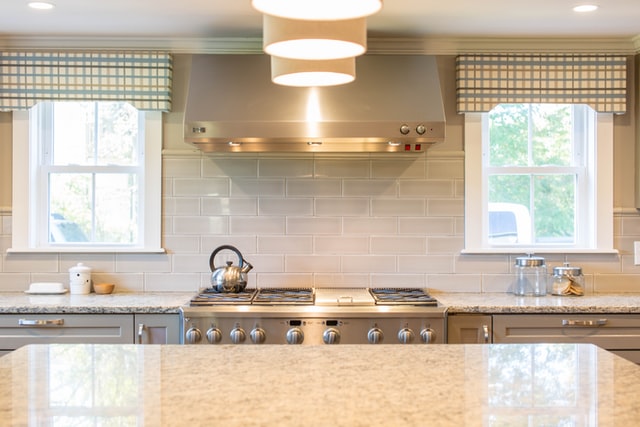The kitchen is a haven for foodies, but if you have a physical disability, whipping up your favorite dishes comes with challenges in standard homes. There are a surprising number of tools and techniques for making your kitchen more accessible, and some don’t cost a penny. Our guide breaks down the best kitchen hacks for at-home chefs with disabilities.
Store Food, Cooking Supplies, and Utensils in Easy-to-reach Areas
Keeping your favorite kitchen essentials in spaces that you can easily reach is a key in making where you prepare your meals accessible. Storing items in low cabinets, low refrigerator and pantry shelves, and in the front of these areas is helpful for those who use wheelchairs, while keeping items at arm-height or slightly lower is a great storage solution for people who have difficulty bending their knees or at the waist.
Keep Your Cabinets, Refrigerator, and Pantry Organized
Tidy food storage areas will keep you from needing to dig around for what you need. Declutter these spaces so they’re not overly-packed and you can conveniently reach everything you need. These tools can help you save space and stay organized:
- Spice rack organizers make it easy to find the seasoning you’re looking for and help you get the most out of the horizontal space in your cabinets.
- Lazy susans in your refrigerator and cabinets make it easier to reach items without having to clear out a shelf when fetching something stored in the back.
- Wire racks installed on cabinet doors make it easy to grab what you need.
Use Small Storage Containers
Small containers are easier to pick up and handle than larger ones for individuals who have difficulty with grip. Putting ingredients in plastic canisters also helps with safety, because they won’t shatter if you drop them — plus, they look beautiful on countertops! If you don’t want to buy containers, purchase products like sugar and flour in small packages.
Use Utensils and Other Tools that Suit Your Needs
If you have trouble with grip, you can find tools that adapt to your needs. Just about every gadget comes in an ergonomic design, including
electric can openers,
kitchen tongs with rubber grips, and
chef’s knives with wide handles. These tools offer added safety and comfort for those with limited range of motion in their hands or wrists.
Replace Round Knobs on Cabinets and Drawers with Long Handles
Handles are easier to grasp from any height, especially for those who have trouble holding onto small items. You may even want to consider switching out the knob on your kitchen door with a lever-style option.
Remove Cabinet Doors Beneath Your Sink
Wheelchair users will be better able to position themselves in front of a kitchen sink that doesn’t have doors attached to the cabinet underneath. Just be sure to block pipes to protect your legs, kids, and pets, and remove any hazardous chemicals you keep stored here.
Update Your Sink with a Hands-free Faucet
Touchless kitchen faucets are easy for anyone to use, regardless of their abilities. They can be especially helpful for people who use wheelchairs that have trouble reaching a traditional handle and for those who hold onto walkers for balance. Hands-free soap dispensers are also a great addition.
Add Lower Surfaces for Food Prep
If you have room in your budget, lowering your countertops to make them more accessible to loved ones in wheelchairs will be a helpful home modification. Keep in mind this is a major home renovation project, and you’ll need to hire a professional to install new countertops.
If lowering your counters isn’t feasible, you can still add surfaces that are easier to reach for those who need to use them from a seated position. You can attach a large cutting board to the end of your cabinets, or simply add a low table that serves as a place to prepare culinary creations.
Move Outlets to Reachable Areas
You’ll need to work with a licensed electrician for this project, but it will make it easier to use your favorite kitchen gadgets. Be sure to keep them out of reach of children, or use outlet covers to hide them from curious kids and pets.
Invest in the Right Appliances
Upgrading your appliances is an expensive fix, but it can be a great way to outfit your kitchen with tools that make it easier to cook, bake, and store your food. When picking out new appliances, keep these features in mind:
- Slide-in ovens — which have knobs and controls on the front rather than the top — are easier for people who use wheelchairs to operate.
- Smart ovens allow you to control and monitor the temperature from your smartphone, reducing the need to continuously open the door to check on your food as it cooks.
- Refrigerators with the freezer on the bottom are ideal for those who use wheelchairs.
- Refrigerators with ice and water dispensers on the exterior of one of their doors offer quick access without needing to open the fridge.
- Smart refrigerators offer a lot of digital perks that are a boon to any home-based chef. Models that allow you to browse the contents of your fridge via a smartphone app can be particularly helpful for those with disabilities.
- Smart microwaves connect to voice-commanded devices (like the Amazon Echo and Google Home) to make them touchless (other than adding and removing food, of course!).
- Smart toasters allow those with limited use of their hands to use a touchscreen rather than knobs.
Foodies of all abilities can create a safer and more welcoming kitchen that helps make all of their culinary dreams come true. Whether your changes are big or small, implementing one or more of these accessibility solutions will make it easier than ever to make — and enjoy! — your favorite dishes.

